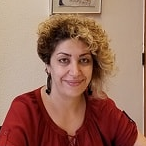Remote Sensing Applications in Urban Greenery and Water Management
A special issue of Remote Sensing (ISSN 2072-4292). This special issue belongs to the section "Urban Remote Sensing".
Deadline for manuscript submissions: closed (30 November 2021) | Viewed by 5121
Special Issue Editors
Interests: water engineering and management; water footprint and water productivity; drought and aridity; water security; estimation of evapotranspiration in urban greenery and agricultural farmlands using ground-based, modeling, and remote sensing approaches
Special Issues, Collections and Topics in MDPI journals
Special Issue Information
Dear Colleagues,
While the recently emerged concepts of “greening cities” and “sponge cities” are dynamically evolving, numerous cities around the globe have made significant efforts to increase and enhance their green spaces. There is growing recognition that urban greenery provides multiple environmental services and is important to public health and well-being. In 2015, the United Nations set 17 Sustainable Development Goals (SDGs) that were adopted by 193 countries as a guide to creating livable, sustainable, and socially equitable cities. Urban greenery is a crucial element of achieving some of these goals. Strategically planned urban green spaces have great potential to mitigate climate change (SDG 13) while at the same time shaping safer, healthier, and more sustainable environments (SDG 11). Yet, our ability to maximize the benefits of urban greenery requires an improved understanding of its interactions with hydrologic and climatic processes. Urban greenery consists of numerous vegetated plots embedded into cityscapes and exposed to various microclimates, soil characteristics, and management regimes. Quantifying the hydrologic and climatic processes of such diverse and spatially heterogeneous systems is a major challenge.
This Special Issue is focused on advances in remote sensing applications to measure, map, and monitor hydrologic and climatic characteristics for the efficient and sustainable water management of urban greenery. The ability of remote sensing to characterize land surface properties on a range of spatial and temporal scales makes it a unique tool for addressing water fluxes in urban vegetation. Developing novel methodological approaches and identifying opportunities and limitations of remote sensing applications are essential to advancing urban ecohydrology, improving urban water management, and empowering cities to develop innovative sustainable designs and practices.
Dr. Hamideh Nouri
Dr. Elizaveta Litvak
Guest Editors
Manuscript Submission Information
Manuscripts should be submitted online at www.mdpi.com by registering and logging in to this website. Once you are registered, click here to go to the submission form. Manuscripts can be submitted until the deadline. All submissions that pass pre-check are peer-reviewed. Accepted papers will be published continuously in the journal (as soon as accepted) and will be listed together on the special issue website. Research articles, review articles as well as short communications are invited. For planned papers, a title and short abstract (about 100 words) can be sent to the Editorial Office for announcement on this website.
Submitted manuscripts should not have been published previously, nor be under consideration for publication elsewhere (except conference proceedings papers). All manuscripts are thoroughly refereed through a single-blind peer-review process. A guide for authors and other relevant information for submission of manuscripts is available on the Instructions for Authors page. Remote Sensing is an international peer-reviewed open access semimonthly journal published by MDPI.
Please visit the Instructions for Authors page before submitting a manuscript. The Article Processing Charge (APC) for publication in this open access journal is 2700 CHF (Swiss Francs). Submitted papers should be well formatted and use good English. Authors may use MDPI's English editing service prior to publication or during author revisions.
Keywords
- evapotranspiration
- urban water consumption/use
- urban green spaces
- heterogeneous vegetation
- smart green cities
- sponge cities
- urban green infrastructure
- sensors






